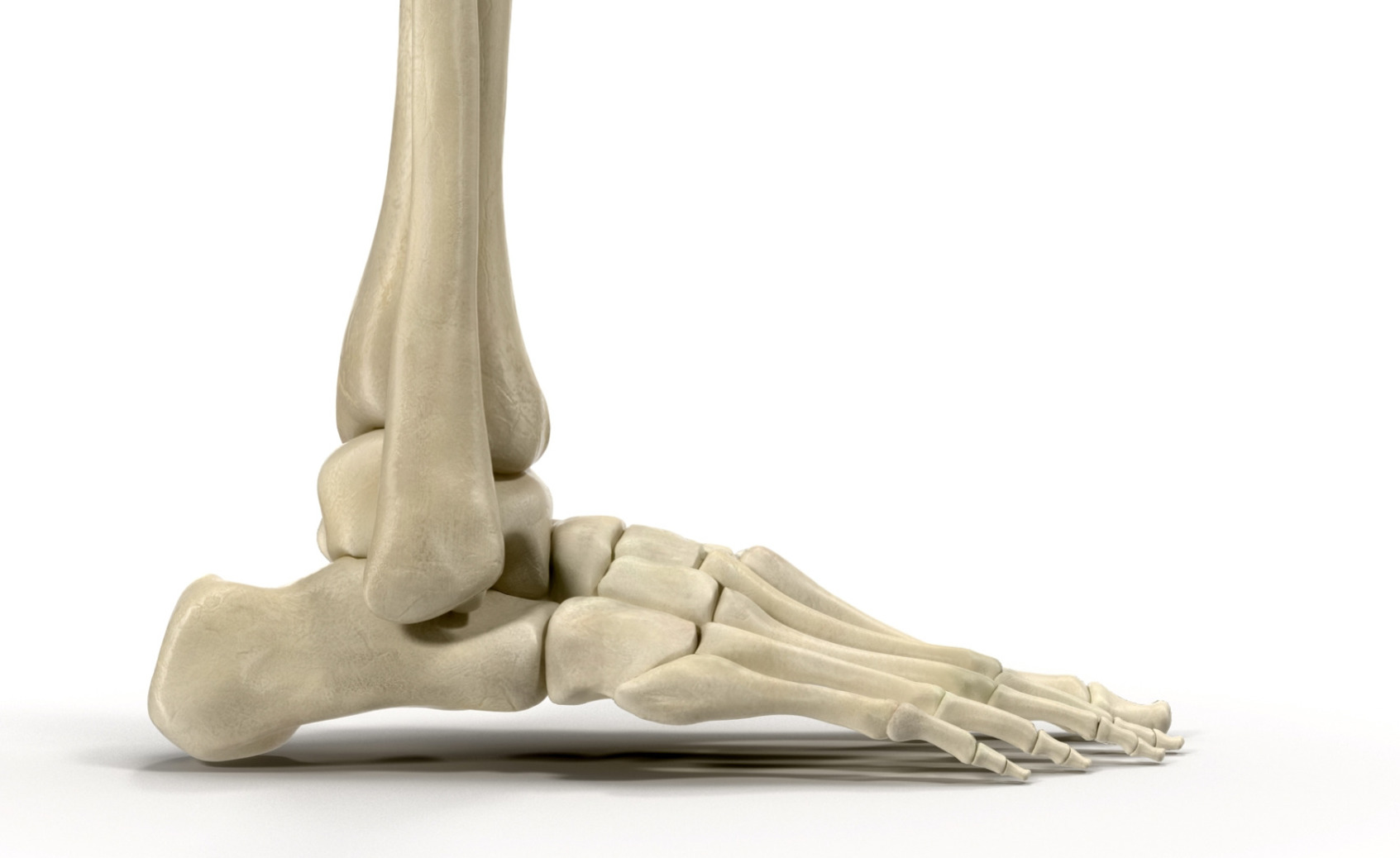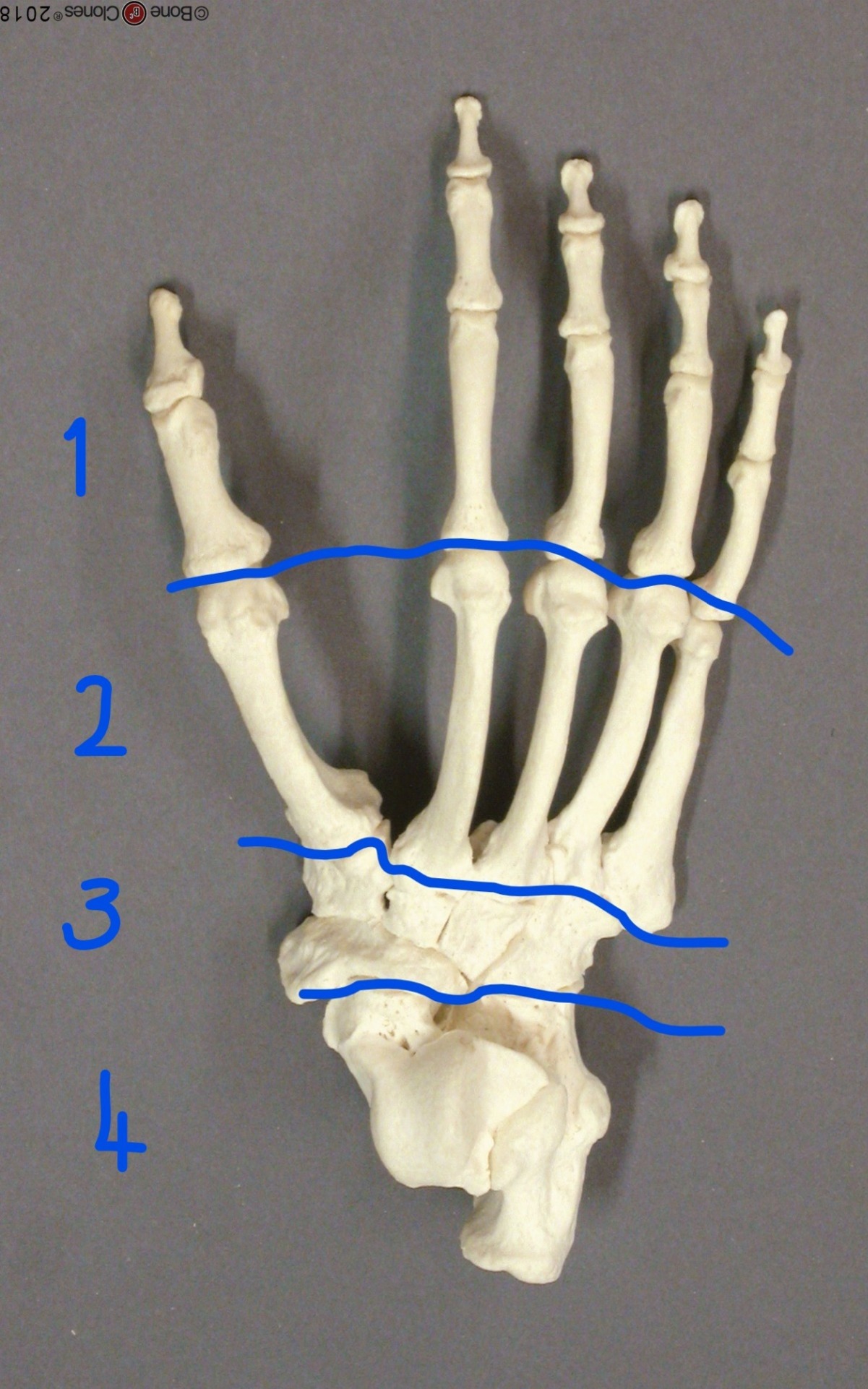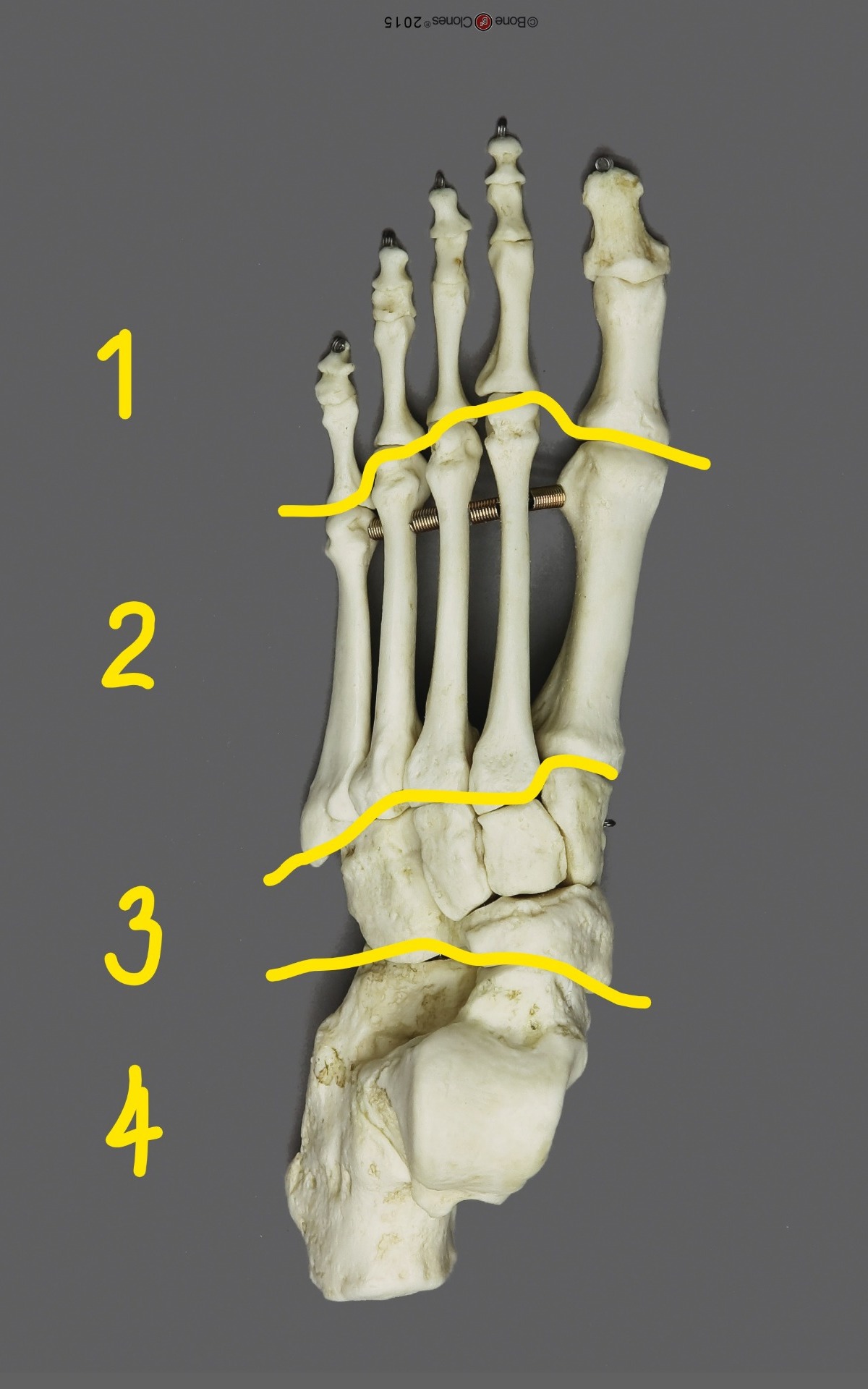Why are Feet not always great at being feet?
Posted on 1st August 2018 at 10:26
Let’s face it, sometimes feet are not great at being feet. They get lumps and bumps, limps and pains.
Why? Well at the end of the day the way we, humans, stand upright, stacking our leg bones perpendicular to our foot bones and our pelvis, spine and head on top of that.
Also, in western society, we shove them into man made, often unstructured, footwear and walk on flat hard surfaces like concrete or wooden panels, also man made.
But isn’t that what feet are for?
Ultimately feet like the rest of our bodies have evolved from chimpanzee like ancestors. Our closest living ancestors are bonobo apes.



Take a look at these two skeletal feet. The one with the yellow lines drawn on are from a male human left foot and the one with the blue lines are from a chimpanzee right foot.
Immediately we notice the longer toes (Zone 1) in the chimp and the wider gap between the first and second toes extending into the metatarsal bones in zone two. This is because the chimp needs his feet to be flexible and muscular for grasping and dexterous for picking things up. And human feet are our interface with the ground providing firstly shock absorption and balance then becoming a rigid lever to propel our body forward.
In these images Zone 3, the tarsal bones are narrower in the chimp and articulate in a different way with Zone 4, the heel, than the humans.
There are many papers written on linear or non-linear evolution and various fossils have been found millions of years apart showing different variations of heel, tarsal, metatarsals and toes. But to simplify it, we used to need what is now our big toe and arch to be opposable and now we need the big toe to be more in line with the smaller toes and the arch, which is made up of the metatarsals and tarsal bones to be stable and spring like. Another throw back is the metatarsal arch our lesser known arch, which in an ideal foot is a concave from the first metatarsal head to the fifth. Touch the tip of your thumb to the tip of your fifth finger and you can see your hand’s preferred range of motion.
So rather than popping on your flip flops, ballet pumps or going barefoot on a flat surface have a think. Look at the sole of your shoe, does it support BOTH arches? Bringing the ground up to meet your foot helps prevent your foot pushing and changing to meet the ground.
Next time I’ll chat about the evolution of gait…. That’s how we walk.
Tagged as: Human Feet
Share this post:





